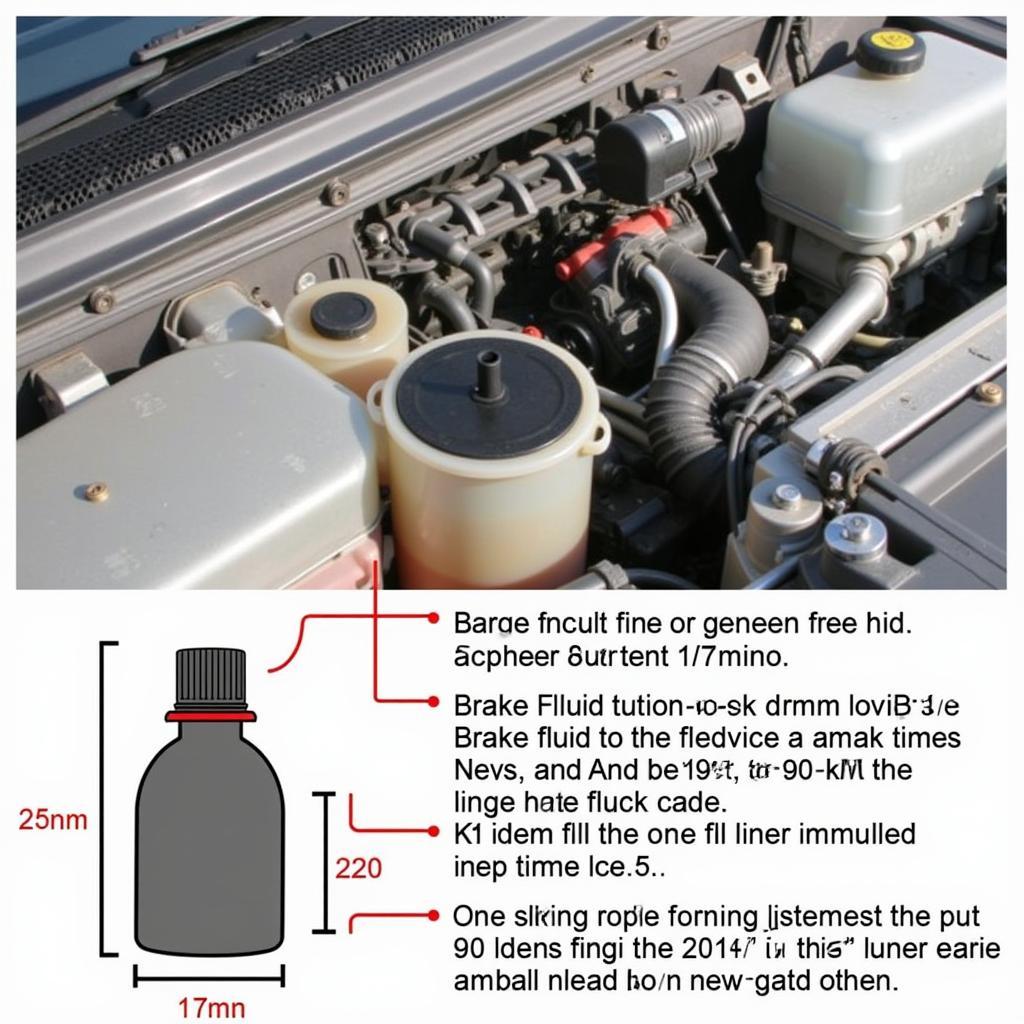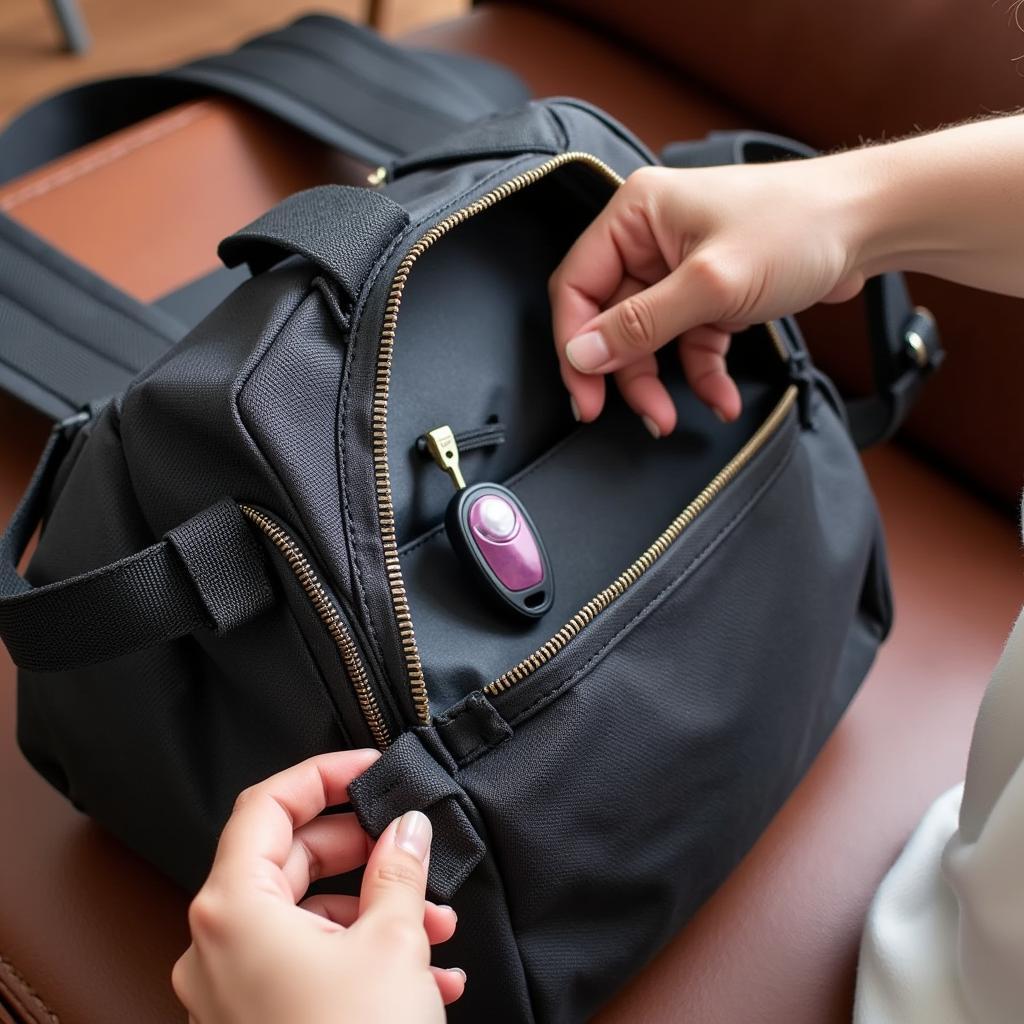The dreaded dodge nitro brake warning light can be a source of anxiety for any driver. Understanding why it illuminates and how to address the issue is crucial for maintaining your vehicle’s safety and performance. This comprehensive guide will delve into the various reasons behind the brake warning light in your Dodge Nitro, offering practical troubleshooting advice and solutions. We’ll also cover how remote diagnostics, programming, and software installation can play a crucial role in fixing these issues.
If your Dodge Nitro’s brake warning light is on, it signals a potential problem within your braking system, ranging from low brake fluid to more complex issues with the ABS system. Ignoring this warning could lead to compromised braking performance and potentially dangerous driving conditions.
One of the first steps to take when the brake warning light comes on is to check your brake fluid level. A low brake fluid level can trigger the warning light and significantly reduce braking power. You can easily check this by locating the brake fluid reservoir under the hood of your vehicle. If the fluid is low, add brake fluid that meets the specifications outlined in your owner’s manual. However, persistently low brake fluid could indicate a leak, which requires professional attention. Check out this article for more information on the 2007 Dodge Nitro brake warning light.
Understanding the Dodge Nitro Brake Warning Light
The brake warning light in your Dodge Nitro serves as a critical indicator of potential problems within the braking system. It can be triggered by various factors, ranging from simple issues like a low brake fluid level to more complex problems requiring professional diagnosis and repair. Understanding these different causes is crucial for effective troubleshooting.
Common Causes of the Brake Warning Light
Several common issues can illuminate the brake warning light in your Dodge Nitro:
- Low brake fluid: This is often the most common culprit. Low brake fluid levels can significantly reduce braking power.
- Worn brake pads: As brake pads wear down, the brake fluid level in the reservoir will drop. Excessively worn pads can trigger the warning light.
- Faulty ABS sensor: The Anti-lock Braking System (ABS) relies on sensors to function correctly. A malfunctioning sensor can activate the warning light.
- Issues with the parking brake: Problems with the foot parking brake warning light wiring can also trigger the brake warning light. Check this link for further details: foot parking brake warning light wiring.
- Malfunctioning brake master cylinder: The brake master cylinder is a crucial component responsible for distributing brake fluid pressure. A faulty master cylinder can lead to a loss of braking power and trigger the warning light.
 Checking the Brake Fluid Reservoir in a Dodge Nitro
Checking the Brake Fluid Reservoir in a Dodge Nitro
Troubleshooting the Brake Warning Light
When your Dodge Nitro’s brake warning light illuminates, it’s essential to take prompt action. Here’s a step-by-step guide to help you troubleshoot the problem:
- Check the parking brake: Ensure the parking brake is fully disengaged. Sometimes, a slightly engaged parking brake can trigger the warning light.
- Inspect the brake fluid level: Locate the brake fluid reservoir under the hood and check the fluid level. If it’s low, add the recommended brake fluid.
- Examine the brake pads: Visually inspect your brake pads for wear. If they appear thin or worn down, they likely need replacement.
- Consult a professional: If the issue persists after these initial checks, it’s crucial to seek professional help.
The Role of Remote Diagnostics and Software Solutions
Modern technology has revolutionized automotive diagnostics and repair. Remote diagnostics, programming, and software installations are increasingly being used to address various vehicle issues, including brake system problems. For instance, a remote diagnostic scan can pinpoint the exact cause of the brake warning light, saving time and potentially reducing repair costs. Moreover, software updates can address bugs and improve the performance of various vehicle systems, including the ABS.
“Remote diagnostics can significantly expedite the troubleshooting process, allowing technicians to quickly identify the root cause of the brake warning light and recommend appropriate solutions,” says John Smith, Senior Automotive Technician at Acme Auto Repair.
2007 dodge nitro brake warning light
Conclusion
The dodge nitro brake warning light should never be ignored. Understanding the potential causes and taking prompt action is essential for ensuring your safety and the longevity of your vehicle. While some issues can be addressed with simple checks and fixes, others require professional intervention. Utilizing advanced diagnostic tools and software solutions can significantly enhance the troubleshooting and repair process, leading to quicker and more effective resolutions.
“Addressing brake system issues promptly not only enhances safety but also prevents further damage and potentially costly repairs down the road,” adds Maria Garcia, Lead Diagnostic Technician at XYZ Auto Solutions.
FAQ
-
What should I do if my brake warning light comes on while driving? Safely pull over to the side of the road and assess the situation. If possible, check your brake fluid level and inspect your brake pads. If the problem seems serious, call for roadside assistance.
-
Can I drive with the brake warning light on? It’s not recommended to drive with the brake warning light on, as it indicates a potential problem with your braking system. Driving with a compromised braking system can be dangerous.
-
How often should I check my brake fluid level? It’s a good practice to check your brake fluid level at least once a month.
-
How much does it cost to replace brake pads? The cost of brake pad replacement varies depending on the vehicle and the type of brake pads used.
-
What is ABS, and why is it important? ABS stands for Anti-lock Braking System. It prevents the wheels from locking up during hard braking, allowing you to maintain steering control.
-
How often should I have my brakes inspected by a professional? It’s generally recommended to have your brakes inspected at least once a year or every 12,000 miles.
-
Can remote diagnostics fix my brake problems? While remote diagnostics can identify the issue, it won’t physically fix the problem. It provides valuable information that helps technicians determine the appropriate repair strategy.

